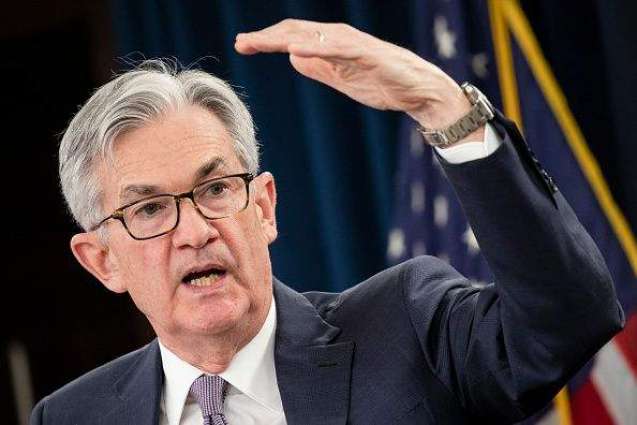The Federal Reserve might go back to stronger rate hikes if US jobs and wage growth continue to surprise, although the central bank wants to give disinflation, which has only just begun, a chance to set in, Chairman Jerome Powell said Tuesday.
WASHINGTON (Pakistan Point News / Sputnik - 08th February, 2023) The Federal Reserve might go back to stronger rate hikes if US jobs and wage growth continue to surprise, although the central bank wants to give disinflation, which has only just begun, a chance to set in, Chairman Jerome Powell said Tuesday.
"If strong labor market reports or higher inflation reports continue, the Fed may need to raise rates more than is currently priced in," Powell said during a chat on the economy hosted by the Economic Club of Washington. At the same time, the Fed chair said: "Disinflation has begun but it has a long way to go. This process is likely to take quite a bit of time, it's likely to be bumpy, not smooth."
US inflation, as measured by the Consumer Price Index (CPI) grew at 6.5% per annum in December, its slowest since October 2021. Still, that was more than three times the Fed's target of 2% per annum. Prior to the slowdown, inflation hit four-decade highs in June when it expanded at 9.1% yearly from the impact of trillions of dollars of relief spending during the coronavirus pandemic.
The Fed has increased interest rates by 450 basis points over the past year, taking them to a peak of 4.75% from just 0.25% after the COVID-19 outbreak in March 2020.
The central bank's main guide for rates has been the monthly non-farm payrolls, or NFP, report released by the Labor Department. The labor market has been the juggernaut of US economic recovery from the pandemic, with hundreds of thousands of jobs being added without fail since June 2020 to make up for the initial loss of 20 million jobs to the COVID-19 crisis.
While the Fed has tried to keep pace with the NFP reports to set rate hikes accordingly, the jobs data sometimes land after the Fed's scheduled monthly meeting on rates. Case in point was February's modest rate hike of 25 basis points � compared with December's 50-basis points � when the Labor Department belatedly reported that jobs grew to 517,000 from 260,000 in the previous month.
"The labor market is extraordinarily strong," Powell acknowledged at Tuesday's chat on the economy. "We think this will be a process that takes a significant period of time" for it to cool, he added.
Powell also said it will be well into 2024 for the Fed to get inflation back to 2% per annum � a target the central bank has held for a quarter century and which he described as a "global benchmark." "It will almost certainly take until next year to get down to 2%," he said.
The Fed's next decision on rates will be on March 16, well after the release of the February NFP report on March 3.
Should there be another round of heady jobs growth this month, then the central bank's policy-making FOMC, or Federal Open Market Committee, will almost certainly be rethinking the merits of continuing with February's 25-basis point hike, said analysts, who see a potential return to December's 50-basis point increase.
"The real risk is how many rate hikes we could have going forward, rather than the quantum of the next hike," Saira Malik, chief investment officer at asset manager Nuveen, said.
Powell, at a news conference after this month's FOMC meeting, said he expected "a couple more" hikes to get rates to what he called a "restrictive stance" to fight inflation. The Fed's next two meetings are in March and May.
Economists are, however, betting the volatile jobs market will force the central bank to raise rates at least two more times beyond what Powell anticipates. The FOMC's meetings after May are scheduled in June and July.




